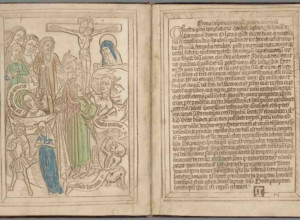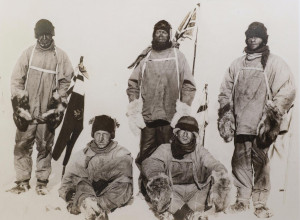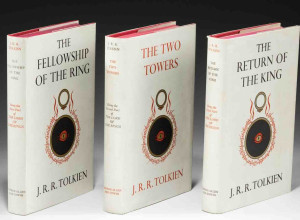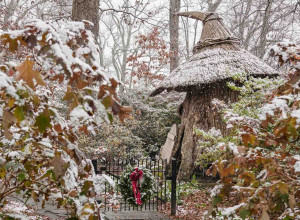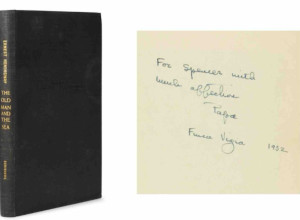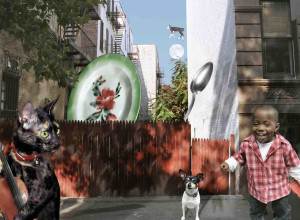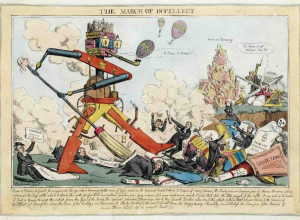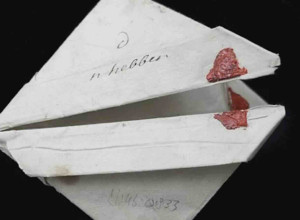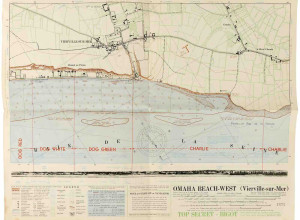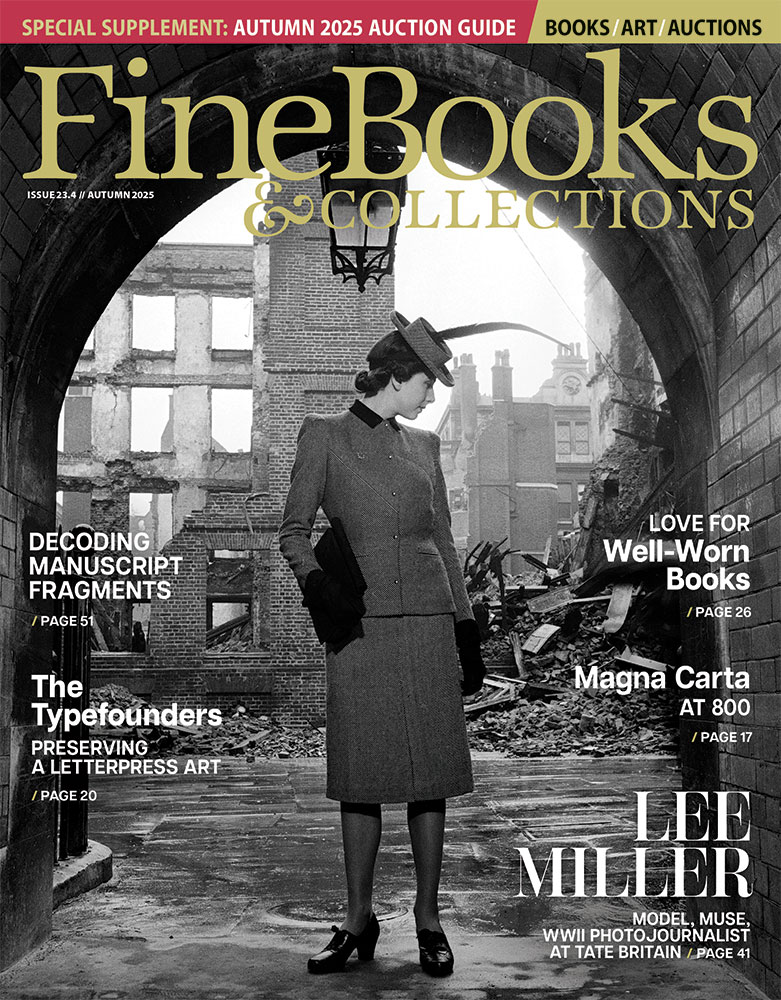Bright Young Booksellers: Erik DuRon and Jess Kuronen
How did you get started in rare books?
Erik: I answered a help wanted ad in the back of the Village Voice. This was in the late 90s. I had done bookish jobs in NYC for ten years after college: assistant to a literary agent, admin work for a book packager, retrospective card catalog conversion at the Butler Library at Columbia University, and most saliently, sales clerk at the old St. Mark's Bookshop in the East Village. I was about to turn 30 and was ready to sink my teeth into something. Bauman Rare Books, which was based out of Philadelphia, happened to be expanding their New York presence just then with their Madison Avenue location. I went in for an interview, and ended up working there 14 years, first as a sales associate, then as a manager. It was my school.
Jess: It's my mom's fault. She's a photographer and designer who ran an offset press for artist's books, first in Chicago and then in Philadelphia, so I was introduced to the idea of "the book as an object" pretty early. I landed my first bookish job at the old Left Bank Books, on 8th Avenue, as I was pursuing my BFA at The Cooper Union. The Left Bank employees used to come into the coffee shop I worked at next door. The manager was complaining about interviewing prospective employees, so I convinced him to hire me and call it a day...somehow that worked. It was my first introduction to the world of bookselling, and it quickly became clear to me that I should stay in it.
Tell us a bit about the history of Left Bank Books. When did you take over? What do you currently specialize in?
Left Bank Books began as a neighborhood used bookshop in Greenwich Village in the early 90s (first as Book Leaves, then Left Bank around 2005, with the first of several changes in ownership). For a variety of reasons, it was forced to close in 2016. We met while working there, which we each did for a year, and like everyone else in the neighborhood were really sad to see it go. We kept in touch, and a year later decided to revive it. We had some ideas about inventory selection and digital marketing we believed would make the business more up-to-date and viable. We started as an online shop, specializing in literature and the arts, with an emphasis on used and rare books we felt spoke to the culture in a fresh, sometimes irreverent way; we built a better website than previously, and established a social media presence. We also did fairs, which Left Bank hadn't done before. Sometime after that we began talking seriously about an open shop, but only recently did it become a realistic possibility for us. Things have moved quickly - we expect to re-open in late March in our new Village location at 41 Perry Street. The shop - about half the size of the old space at roughly 250 square feet - will showcase an eclectic selection from the 20th and 21st centuries (and occasionally earlier), encompassing literature, art, film, photography, fashion, architecture, design, music, theater, dance, children's books, and New York City. We look forward to reimagining what a small, well-curated neighborhood bookshop can be, and in time expect to host events and exhibits. We want to be a destination for seasoned collectors, emerging enthusiasts, and curious newcomers the world over.
How do you split your roles at Left Bank?
Erik: We both do a little of everything. With my deeper background in the trade I tend to do more of the traditional "bookman" things, like buying and cataloging, while Jess handles the design and digital side, but really we meet in the middle and teach each other along the way.
What do you love about the book trade?
Erik: First and foremost the books, and the opportunity every day to see things I've never seen before, as well as old favorites. I love buying, which satisfies most of the urges I might have as a collector, and going where people live to do so. You get fascinating insights interacting with people compelled by a particular set of circumstances to sell books. Sometimes you're a peripheral figure walking into a scene of residual distress, in the case of a death in the family, for instance, or a divorce or bankruptcy. In those instances I try to provide calm, professional assistance in cleaning up a little bit of the aftermath. Other times, as when you're dealing with an older collector deaccessioning, it's an opportunity to be a willing and eager listener to stories that might not otherwise be heard.
Jess: I agree with Erik (and every other person in the trade); I love the books. I love the daily possibility of seeing, holding, and learning about new material. Looking at new books affords, even encourages, micro-obsessions that eventually culminate in more new books.
Describe a typical day for you:
Our days right now are all about L-brackets, and the right hardware for suspending plexi shelves, and figuring out the wattage on LED bulbs, and getting up to speed on our point-of-sale system and how the damn thing is going to interface with our database, and a million other tiresome but crucial details.
Favorite rare book (or ephemera) that you've handled?
Erik: Working at BRB I was privileged to be able to handle a high volume of amazing highspots: Shakespeare folios and quartos, early Americana, major works in the sciences, inscribed Joyces and Hemingways and Fitzgeralds. My favorite thing, though, or one of them at least, I didn't strictly speaking handle (or did, for a total of like 30 seconds). It was a presentation copy of Zola's 1885 novel Germinal inscribed to Guy de Maupassant, one French Naturalist to another, being offered for sale. I made a regrettably low offer and quickly saw it walk out the door. I haven't forgotten it since, or the lesson.
Jess: In the basement of The Cooper Union is The Herb Lubalin Center of Design & Typography, definitely a hidden gem at the school. The core collection is an extensive archive of Lubalin's work, including original drawings and design paste-ups (pre-digital artifacts for someone who had grown up with Apple). They have a copy of New York Is... (1959), a collection of photographs Robert Frank took for the New York Times, mostly for promotions to drum up the paper's ad sales. They also had the original proofs for the ads, using the photo Frank took the year before The Americans published. It was a right book/right place/right time situation; I had just graduated art school, I was about to start my first job in journalism and was trying to figure out how to stay in the book trade.
What do you personally collect?
Erik: Any and every edition I can find of books by a handful of writers who for one reason or another have become lodged in my literary value system: Flaubert, Kafka, Isaac Babel, Tanizaki, Rachel Kushner, a few others.
Jess: If there's a theme to my collecting, I'm not sure what it is. It's more a bunch of half-started collections meant to justify buying one or two books I fell in love with. A friend and I started a slightly facetious collection we call "Quick, capitalism is coming!" that includes anything with the wacky aesthetics of Wall Street.
What do you like to do outside of work?
Erik: Read, go to the movies, hear live music, run, eat and drink.
Jess: I just switch to my other career as a digital designer at The Wall Street Journal, so you know, think about what typeface says "what the hell is going on?!".
Thoughts on the present state and/or future of the rare book trade?
Look at all of the intelligent, energetic and optimistic booksellers you have interviewed for this series. The future of the rare book trade is in good hands, I think we are going to be fine.
Any upcoming fairs or catalogues?
We want to publish a digital catalog in April, once the shop opens, so we can test the versatility of our new set-up. No fairs for us until the Brooklyn Antiquarian Book Fair in September. But did we mention, we're opening a shop? We are.





